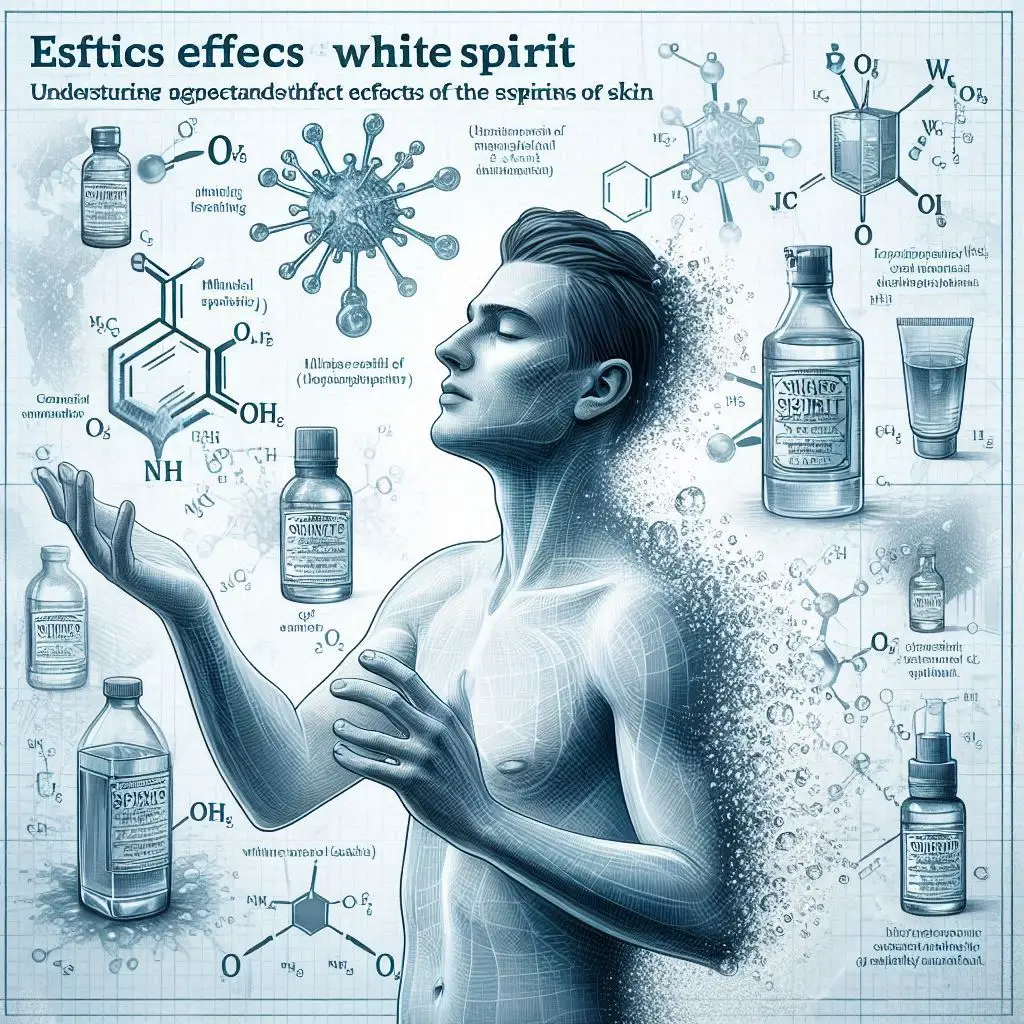
Effects of white spirit on skin
Introduction
Due to the white spirit widespread use, understanding its effects on the skin is crucial for both occupational safety and everyday precautionary measures.
White spirit, also known as mineral spirits or Stoddard solvent, is a common solvent used in various industrial and household applications. It is a mixture of aliphatic, alicyclic, and aromatic hydrocarbons.
Chemical Composition and Uses
White spirit is composed mainly of C7 to C12 hydrocarbons. It is typically used as a paint thinner, a degreasing agent, and in the production of varnishes and adhesives. The primary exposure routes are inhalation and dermal contact, the latter being particularly relevant in scenarios involving direct handling without proper protective equipment.
Immediate Effects on Skin
Irritation: Upon contact with skin, white spirit can cause immediate irritation. This manifests as redness, itching, and a burning sensation. The irritation is due to the solvent's ability to disrupt the lipid layer of the skin, which serves as a protective barrier.
Dryness: White spirit's defatting properties strip the skin of its natural oils, leading to dryness and flaking. This can make the skin more susceptible to cracking and secondary infections.
Dermatitis: Prolonged or repeated exposure can lead to dermatitis, characterized by inflammation, redness, swelling, and blistering. Dermatitis can become chronic with continuous exposure, leading to more severe skin damage.
Chemical Burns: In higher concentrations or with extended exposure, white spirit can cause chemical burns. These burns result from the solvent's ability to penetrate the skin and damage underlying tissues.
Long-term Effects on Skin
Chronic Dermatitis: Continuous exposure to white spirit can lead to chronic dermatitis, a persistent inflammation of the skin. Symptoms include thickened, scaly skin and severe itching. Chronic dermatitis can be difficult to treat and often requires ongoing medical attention.
Sensitization: Some individuals may become sensitized to white spirit over time, developing allergic contact dermatitis. This immune response results in severe itching, redness, and swelling even at low levels of exposure.
Skin Cancer: There is some evidence suggesting that prolonged exposure to certain hydrocarbons found in white spirit could potentially increase the risk of skin cancer. This is particularly relevant for individuals with significant occupational exposure.
Mechanisms of Skin Damage
Lipid Disruption: White spirit's solvent properties disrupt the lipid bilayer of the skin, which is crucial for maintaining skin hydration and integrity. This disruption leads to increased permeability, allowing more of the solvent to penetrate deeper layers of the skin.
Protein Denaturation: The hydrocarbons in white spirit can denature skin proteins, causing structural damage to skin cells. This contributes to the irritant and corrosive effects observed with exposure.
Inflammatory Response: The damage caused by white spirit triggers an inflammatory response, characterized by the release of cytokines and other inflammatory mediators. This response exacerbates skin irritation and can lead to more severe dermatitis.
Protective Measures
Personal Protective Equipment (PPE): The use of gloves, long sleeves, and protective creams can significantly reduce the risk of skin exposure to white spirit. Nitrile gloves are recommended as they provide better chemical resistance compared to latex or vinyl gloves.
Proper Ventilation: Ensuring adequate ventilation when using white spirit can reduce the risk of inhalation and secondary dermal exposure. Using the solvent in well-ventilated areas or outdoors is preferable.
Skin Care: Regularly moisturizing the skin can help restore the lipid barrier and prevent dryness and cracking. Barrier creams can provide an additional protective layer against white spirit.
Hygiene Practices: Promptly washing skin with soap and water after exposure can help remove white spirit and reduce the risk of irritation. It is also important to avoid prolonged contact and to change contaminated clothing immediately.
Treatment of Exposure
First Aid: In case of skin contact, the affected area should be rinsed thoroughly with water for at least 15 minutes. Seeking medical treatment is necessary if irritation doesn't go away.
Medical Treatment: For dermatitis or chemical burns, topical corticosteroids and emollients may be prescribed to reduce inflammation and promote healing. In severe cases, systemic treatments may be necessary.
Long-term Care: Individuals with chronic dermatitis or sensitization may require ongoing dermatological care. Avoiding further exposure to white spirit is crucial to managing symptoms and preventing exacerbations.
Conclusion
White spirit poses significant risks to the skin, ranging from immediate irritation to long-term conditions like chronic dermatitis and potential sensitization. The primary mechanisms of skin damage include lipid disruption, protein denaturation, and triggering inflammatory responses. Protective measures such as using personal protective equipment, ensuring proper ventilation, and practicing good hygiene are essential in mitigating these risks. Prompt first aid and appropriate medical treatment are crucial for managing exposure and preventing severe skin damage. Awareness and education about the hazards of white spirit can help individuals take necessary precautions to protect their skin health.
Moreover, industries should implement stringent safety protocols and training to ensure workers are fully informed about the dangers of white spirit and the best practices to minimize exposure. Through a combination of individual caution and institutional safeguards, the adverse effects of white spirit on the skin can be significantly reduced.

